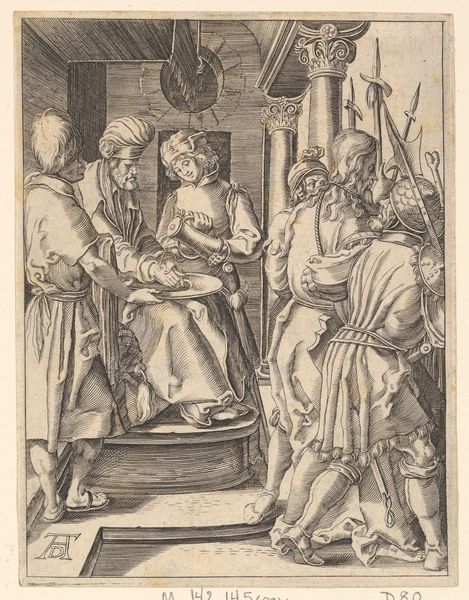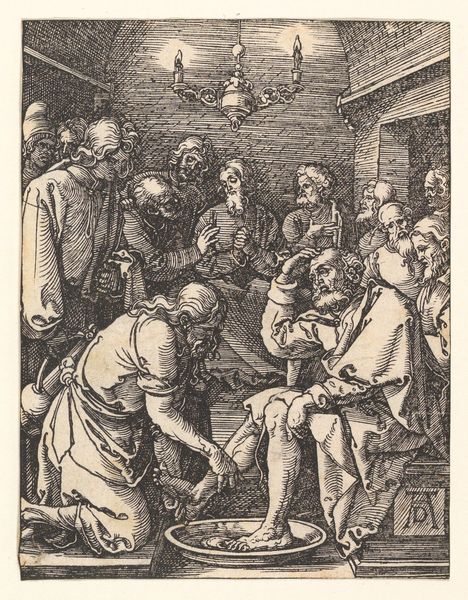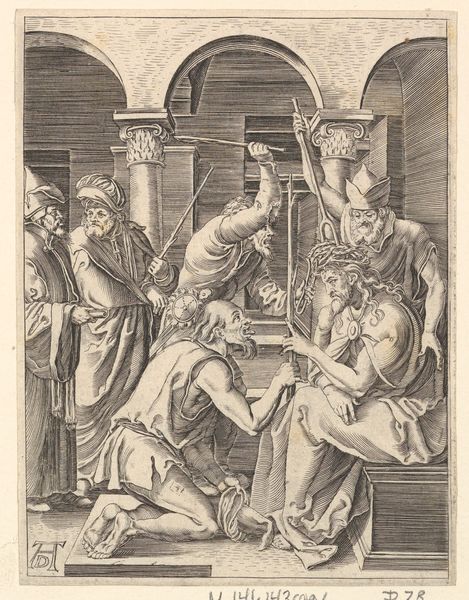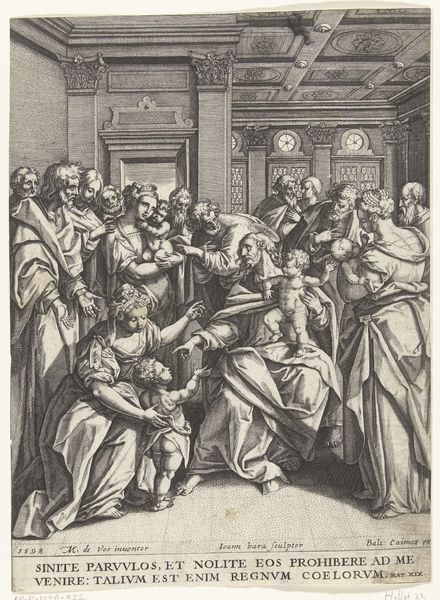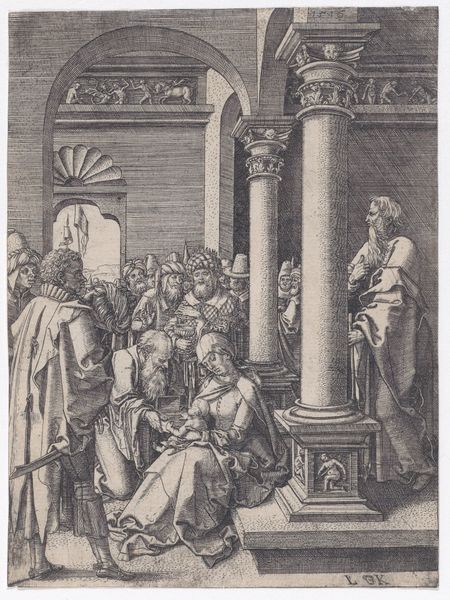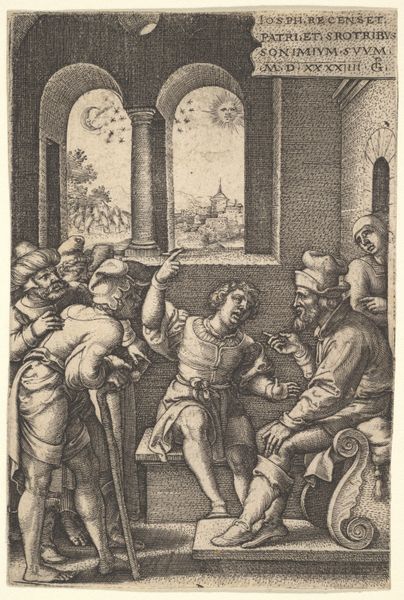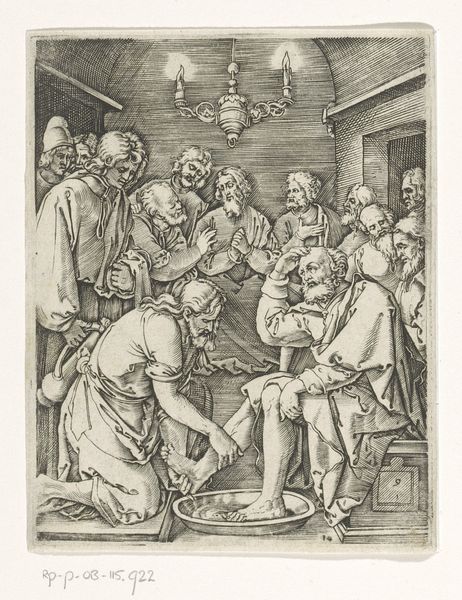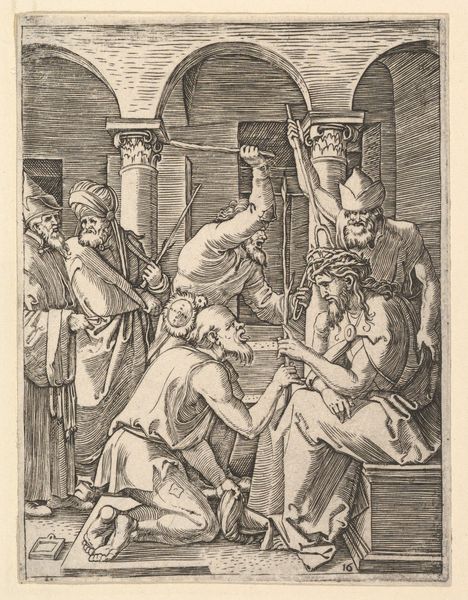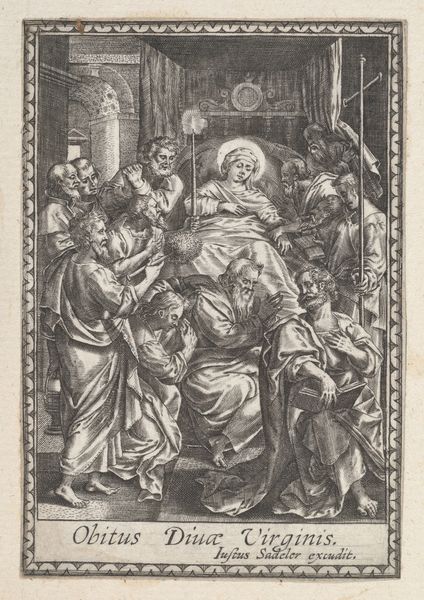
drawing, print, intaglio, engraving
#
drawing
# print
#
pen illustration
#
intaglio
#
group-portraits
#
history-painting
#
northern-renaissance
#
engraving
#
christ
Dimensions: For the whole series: plate circa : 5 x 3 13/16 in. (12.7 x 9.7 cm)
Copyright: Public Domain
Editor: We're looking at "Engraved copies of The Little Passion," created between 1485 and 1699, attributed to Albrecht Durer. The engraving depicts a figure washing feet, surrounded by onlookers. I’m struck by the intricate detail achieved through the engraving process; it really highlights the scene’s solemn mood. What do you see in this piece? Curator: I'm drawn to the labor inherent in producing these engravings, specifically, the socioeconomic impact and potential challenges of their reproduction and consumption during the Northern Renaissance. These multiple "copies," speak to production and distribution – a shift from unique crafted objects to something more broadly available. Were these more affordable prints reshaping art access? How did their distribution networks operate? Editor: That's fascinating. So, instead of focusing solely on Dürer's artistic skill, you are more interested in what this suggests about how art was made available to the wider public? Curator: Precisely. Consider the economic forces driving the creation of such pieces. Who was buying these? Were they reaching audiences beyond the traditional art patronage system? Furthermore, think about the materiality: The type of metal plate used, the inks available, even the tools of the engraver all contribute to our understanding. Were these readily available, or luxurious materials? Editor: So, you're highlighting how even a religious scene can offer insights into labor practices and consumer culture. Does that perspective influence your understanding of Durer as an artist? Curator: Absolutely. We must see Durer not just as a singular genius, but as a key figure embedded within a system of production and exchange. He wasn’t isolated. This allows us to explore larger questions about value, authenticity, and the democratization of images in society. Editor: That reframes my perspective completely! I now appreciate the social story held within its materiality and its method of production. Curator: Exactly. Seeing art as the product of both individual skill *and* societal conditions opens exciting avenues for interpretation.
Comments
No comments
Be the first to comment and join the conversation on the ultimate creative platform.
